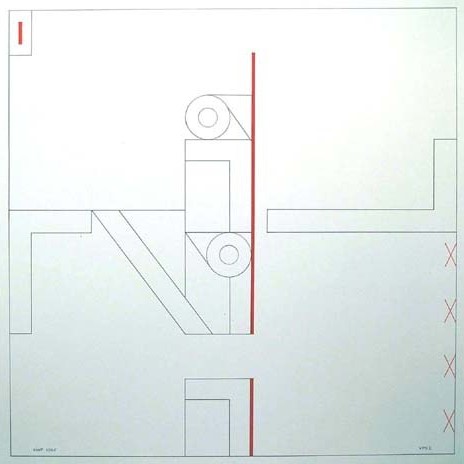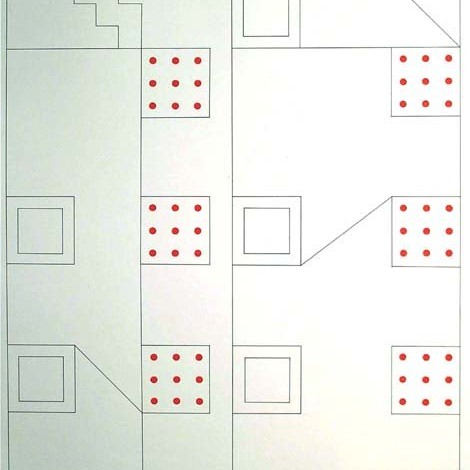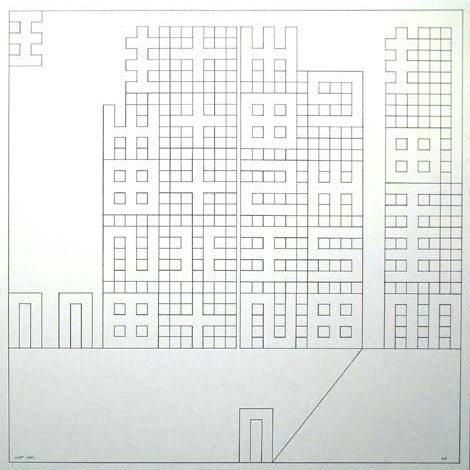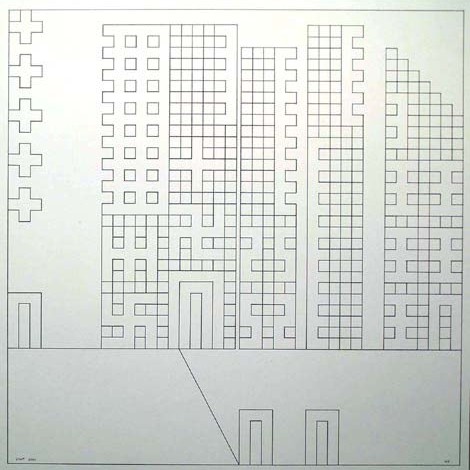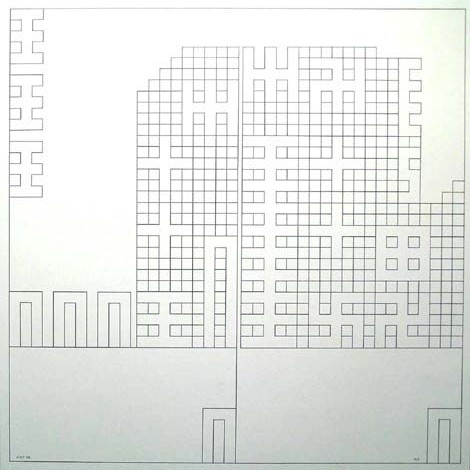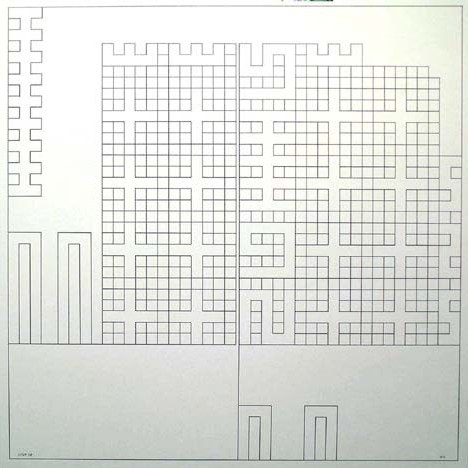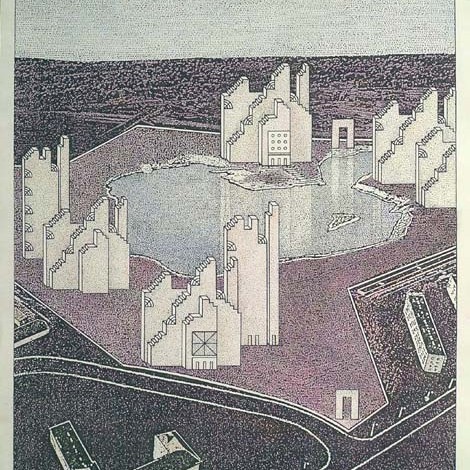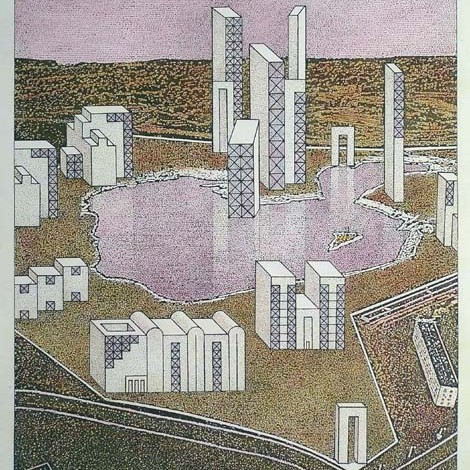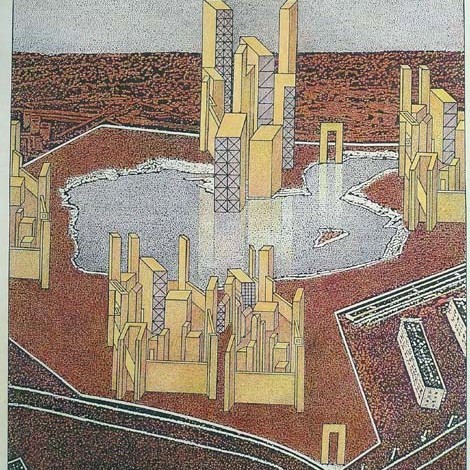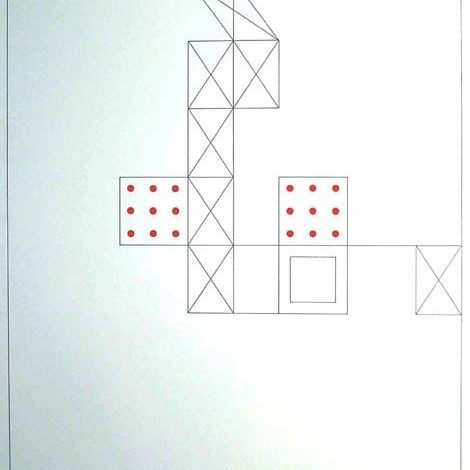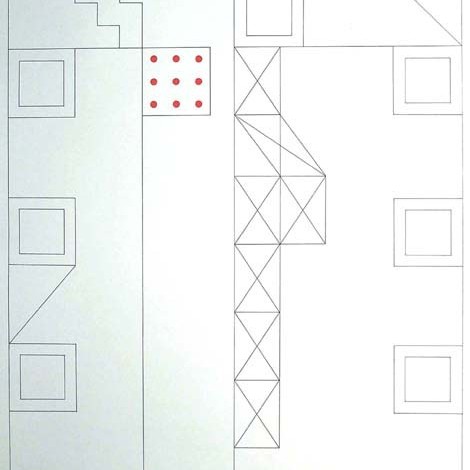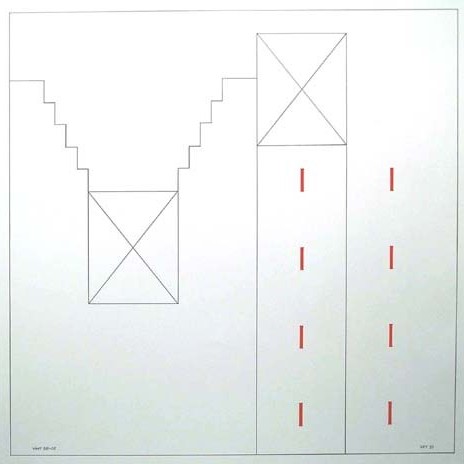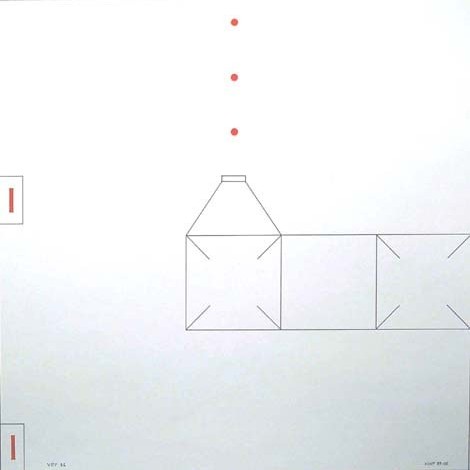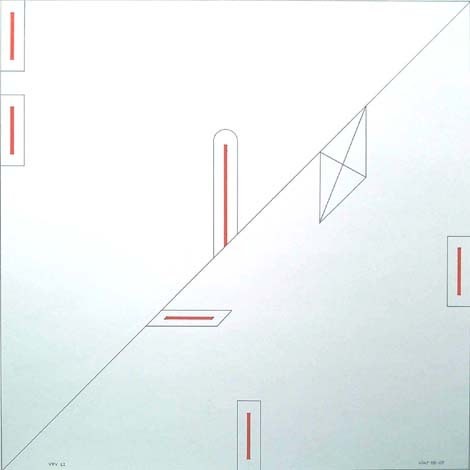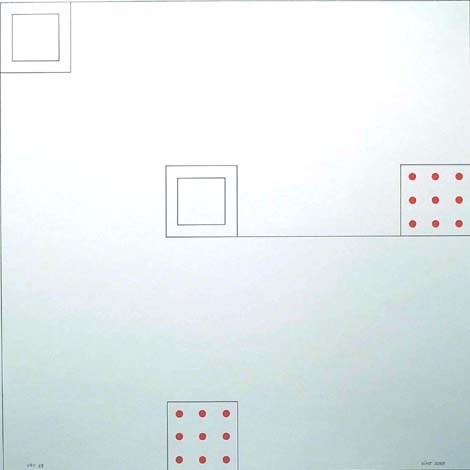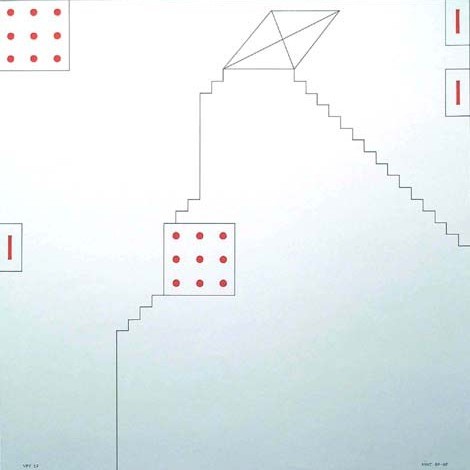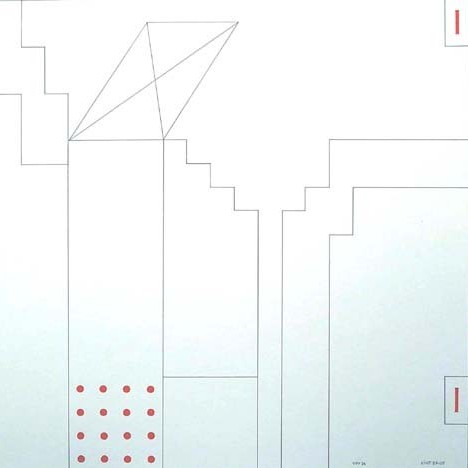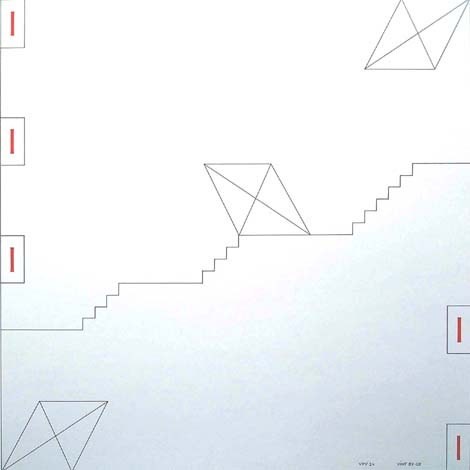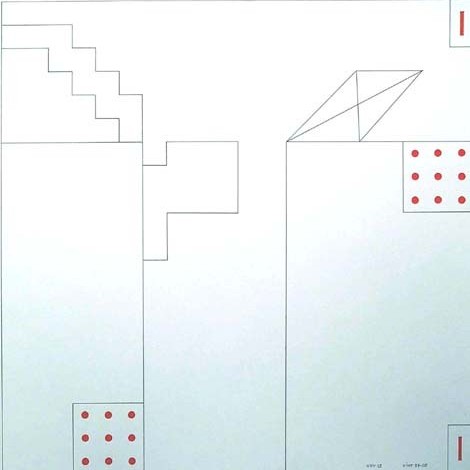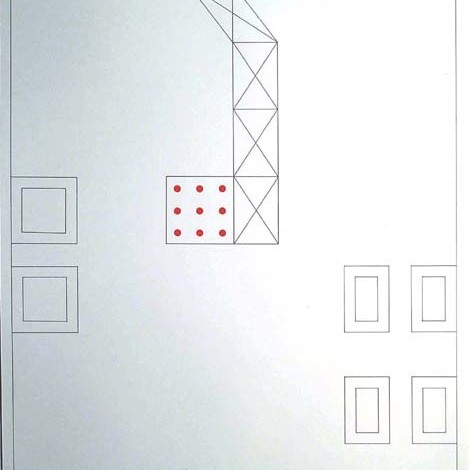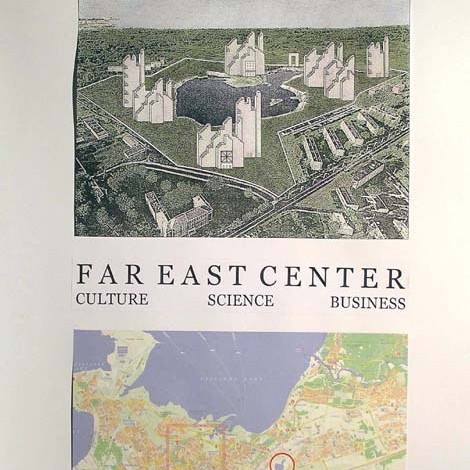Exhibition > Past > Haus Gallery
Haus Gallery 20.09.2005-28.10.2005
1
Geometrical and architectual element
By today Tõnis Vint is a key word on his own. He is one of these quite a few Estonian artists, in case of who we can talk about a school. And while doing so, the term of school should most probably be interpreted in a slightly wider sense that that is usually being done. From one side, during the course of time around Vint have actually gathered young students, in whose creation have sooner or later started to glow through either the key words, being characteristic to the space of Tõnis Vint or even his handwriting. From another side, he has indirectly influenced his contemporaries both in Estonia and abroad, and has done it as an author and a representative of a certain world of thinking. One of the best-known artists, having started at Vint as a student, is for instance Siim-Tanel Annus, whose creation has been dealing for more than a couple of dozen of years with grasping of universality and eternity. Yes, and the ambitions of Vint himself are not smaller themselves.
In case of Tõnis Vint it seems so easy to descend to sentimentalism. Even if we really name his topics universality and eternity, we can still detect also quite concrete border lines. Vint’s geometry is always aesthetically sophisticated, but simultaneously it has a mathematical, even scientific basis. While taking for instance a drawing, on which are only lines and red dots, the majority of viewers most probably get their “artistic smack” already. But while going deeper, it becomes clear that nothing has been placed onto the work only by keeping in mind an aesthetic sensation. There are nine red dots – nine as Saturn has nine rings. The correlations between the rings are already more complicated, for them can be found backgrounds both from the Livonian belt-ornaments and the bottomless layers of the Asian culture. Vint has the command of everything. He finds his way equally in all possible aesthetic, esoteric, philosophical, religious systems. His ability of synthesis is eye-striking, his grasp of material is impressive. But still first of all Vint is an artist in the sense of this word in the spirit of the 60ies: always avant-garde, but artistically elaborated.
Positioning of Tõnis Vint at the crossroads of aesthetics, esoterics and mathematics is confusing. Of course the basic part of the creation of Vint can not only be emphasized his ability to move within the mental heritage of mankind (and not only the mankind). It still strikes the eye, how the works by Vint have captivated also those, who have no idea of the schemes, which lay the foundation for these works. Vint himself actually offers an explanation for that: he tries to create such pieces, which forward certain visual impulses. And here Vint says something that allows us to surmise: what that impulse is while being examined in a more detailed manner and which message should it carry, has already quite thorougly been determined by him.
Vint himself also puts into words the difference, which separates him and those, who use geometry at creating of abstractionism. These, says Vint, concentrate on perceptions, I on the other hand, on messages.
The role of Tõnis Vint in the Estonian artistic world is to a certain extent unembraceable and controversial. From one side a well-known hermit, from another side continuous communication with co-authors. From one side avant-garde, from another side being based on rhythms and patterns, which are repeated in time and space. From one side the creator of emphasized aesthetic worlds, from another side considering this aesthetics anly as a co-phenomenon. From one side traveller in different theories, from another side offering his own interpretations.
But certainly everything else than boring.
